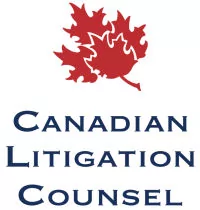- within Insolvency/Bankruptcy/Re-Structuring topic(s)
- with Senior Company Executives, HR and Finance and Tax Executives
- with readers working within the Accounting & Consultancy, Healthcare and Oil & Gas industries
When you go back to school, does your government student loan debt come with you? According to the Supreme Court of Canada's recent decision in Piekut v Canada (National Revenue), 2025 SCC 13 ("Piekut"), the answer is a firm "yes."
The Court's decision clarifies how section 178(1)(g) of the Bankruptcy and Insolvency Act, RSC 1985, c B-3 (the "BIA") operates. That section says that borrowers who declare bankruptcy (or file a consumer proposal) are not released from their government student loan debts if their bankruptcy occurs within seven years after they ceased to be a student.
The decision resolves a long-standing split among Canadian courts, and may have far-reaching consequences for students facing higher tuitions, less employment prospects and, in many cases, greater financial risk. Let's explore the Court's decision.
The Background
Generally, when people are discharged from bankruptcy—or make a consumer proposal that is accepted by creditors—they are released from their unsecured debts.
There are exceptions.
Section 178 of the BIA states that a bankrupt will not be released from certain defined categories of debts that society deems to be particularly important to preserve even upon being discharged from bankruptcy, including alimony, judgments for fraud, and taxpayer-funded student loans.
That said, student loan debt can be discharged if enough time has passed. Specifically, if the bankruptcy (or consumer proposal) occurs more than seven years after the borrower ceased to be a student, the debt can be released. In cases of significant hardship, the waiting period can be shortened to five years.
But when, exactly, does that seven-year clock start ticking? And does it reset if borrowers go back to school later on, even if they pay for it themselves?
That was the question for the Court in Piekut.
The Case
Izabela Piekut attended various post-secondary programs between 1987 and 2009. She received government student loans for many of them, but funded her final program, a Master of Education, herself. In 2013, four years after completing that last degree, she made a "consumer proposal" under the BIA: a less stringent alternative to bankruptcy which is nevertheless still subject to the seven-year student loan exception in section 178. She later argued that her student loan debts should be discharged, since her last loan-funded education ended back in 2003—well outside the seven-year window.
The question before the Court was whether the seven-year countdown within section 178(1)(g) starts when borrowers finish their last loan-funded studies, or their last post-secondary studies of any kind, regardless of how they were paid for.
Prior to Piekut, courts in British Columbia and Quebec had favoured the "single-date" interpretation, where the clock resets based on any period of study. Courts elsewhere, including Saskatchewan in Hildebrand (Bankrupt), Re, 2010 SKQB 321, had applied a more flexible "multiple-date" approach, potentially allowing older loans to be discharged with newer ones remaining.
The Majority: One Date to Rule Them All
Writing for the majority, Justice Jamal sided with the "single-date" approach. The relevant date, he held, is the last time the individual ceased being a student regardless of how that education was funded.
Because Ms. Piekut was still a student in 2009 and filed her consumer proposal in 2013, her proposal fell within the seven-year window, and she was not entitled to have her student loans discharged.
Justice Jamal emphasized the plain wording of section 178(1)(g) in both its English and French forms, and stressed the need to achieve an interpretation that embraced both official versions of the statute. In this case, a bilingually consistent reading of section 178(1)(g) required recognition of the fact that the French version of this provision is more restrictive than the English; moreover, the plain text in both languages pointedly used the definite article—"the date" ("cette date")—and a single point-in-time verb—"ceased" ("a cessé"). All of this suggested a single, specific end to one's time as a student.
In addition to these textual interpretive aids, Justice Jamal highlighted Parliament's intent shown by the legislative evolution of section 178: to discourage opportunistic bankruptcies by recent graduates whose financial outlook is likely to improve in their future career, and to ensure the sustainability of publicly funded student loan programs.
The Dissent: Seven Clear Years
Justice Karakatsanis, who was joined by Justices Martin and Moreau, took a different view. She rejected both the rigid "single-date" approach and the more open-ended "multiple-date" approach endorsed by courts in Saskatchewan and elsewhere. Exemplifying the ancient axiom of the Delphic Oracle ("all things in moderation"), Justice Karakatsanis would have taken a middle ground which utilized a forward-looking interpretation of section 178(1)(g): if borrowers have not been a student for a continuous period of seven years, their student loans should be eligible for discharge, even if they return to school later.
Justice Karakatsanis described how her "seven clear years" test better balanced the BIA's dual objectives: by fairly distributing a bankrupt's assets to creditors, and allowing the bankrupt to make a fresh financial start. Her interpretation, she said, would avoid the unfairness of tying borrowers indefinitely to student loans from decades earlier, while still preventing opportunistic recent graduates from walking away from their debts too soon—all while still being a reasonable reading of the statutory text.
Under Justice Karakatsanis's approach, Ms. Piekut's loans from the early 1990s could have been discharged, even if her later self-funded studies reset the clock for more recent obligations.
Timing is Everything
The Court's decision in Piekut has significant consequences for Canadians struggling with student loan debt, especially those who return to school to improve their job prospects.
The takeaway is clear: going back to school, even without taking on new government student loans, restarts the seven-year clock when such debts could have been released in a bankruptcy or consumer proposal.
While the majority's approach supports the integrity of the student loan system and protects the public purse, it also raises pressing questions about modern education and the changing labour market. More Canadians are retraining mid-career, pursuing second (or third) degrees, and adapting to shifting economic demands. In this environment, a rule that makes it riskier to improve one's career—and thus to increase one's ability to pay back such debts—may discourage lifelong learning and attempts at financial self-improvement.
As the dissent warned, this approach risks undermining the rehabilitative goals of bankruptcy law. A person who studied in the 2010s and returned to school in the 2020s in an effort to financially better themselves may instead be stuck with decades-old debt.
In contrast, Justice Jamal offered a sobering takeaway at paragraph 106 of his reasons: the best way to avoid student loan debt that will not go away is to shun "programs of study or courses that may provide little prospect of economic return." For many, that is easier said than done.
The Court's decision in Piekut may spur calls for Parliament to revisit the "single-date" rule, or perhaps to increase the court's discretion when assessing an individual's eligibility for a discharge of their student loan debt. Indeed, a delicate re-balancing of the how BIA's objectives are achieved within section 178(1)(g) may become more important as economic pressures on students and graduates intensify in Canada.
Until then, the Court's decision in Piekut offers at least one free lesson in financial planning: timing is everything.
The content of this article is intended to provide a general guide to the subject matter. Specialist advice should be sought about your specific circumstances.


